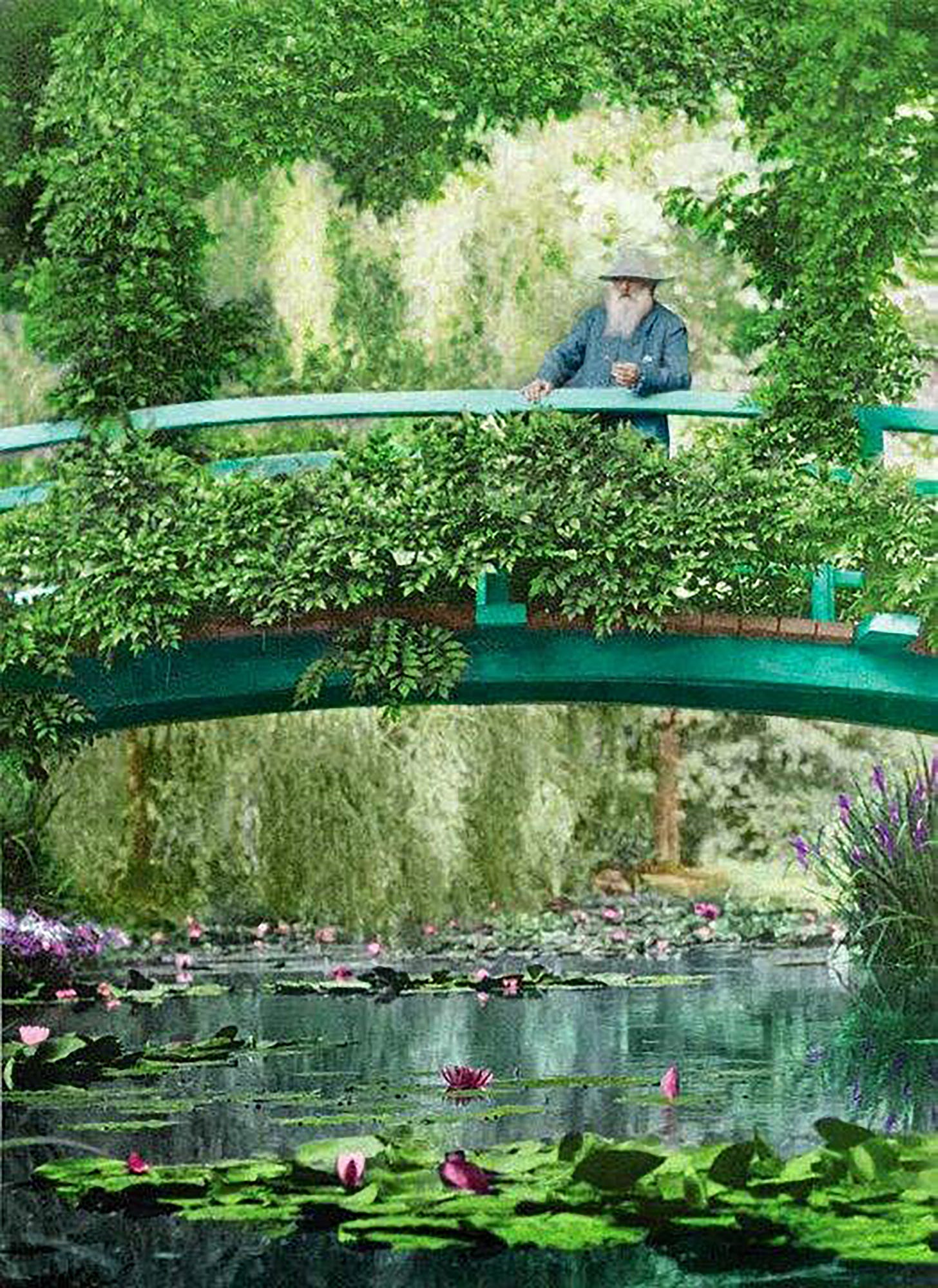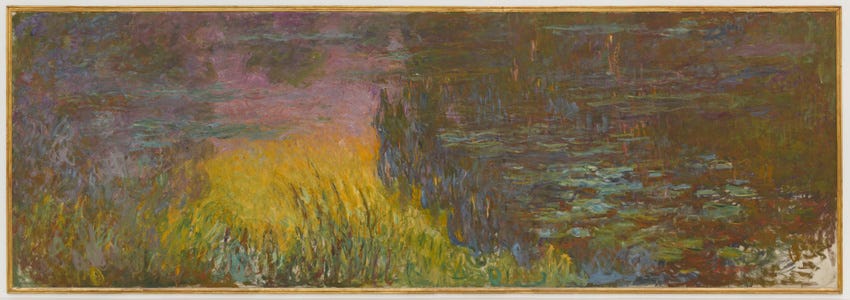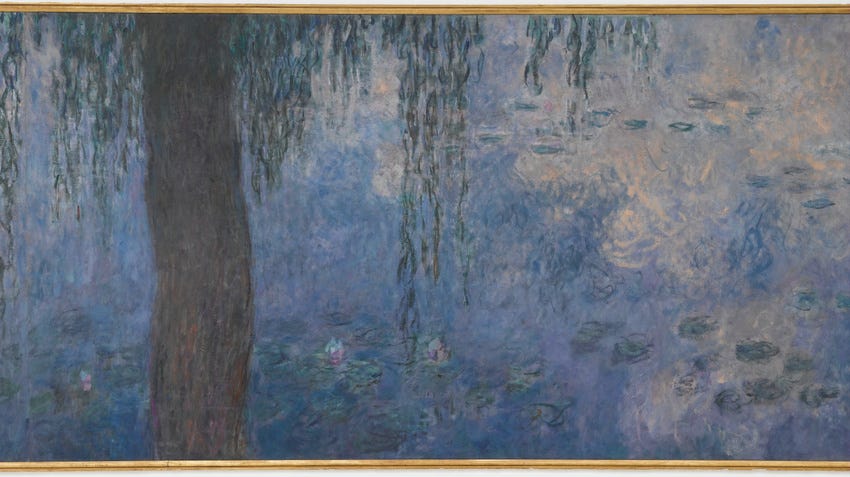Claude Monet on his Japanese Footbridge. — Photo by Étienne Clémentel
Étienne Clémentel (1864 – 1936), a French government official with a portfolio in economics and also a close friend of Prime Minister George Clemenceau, captured this image of the artist on his Japanese Footbridge using the Autochrome Lumière photographic process.
The occasion was the day after the November 11, 1918 Armistice, when Claude Monet presented eight large canvases – the Water Lilly Paintings – to the French government. George Clemenceau had first encouraged Monet to paint the large paintings in 1914. When Clemenceau visited Giverny in 1918 to choose the panels that were to be installed in the Musée de l’Orangerie in Paris, Clémental accompanied him and took Autochrome photos of the artist in his gardens.
The Swiss Camera Museum describes the Autochrome process like this: “The Lumière brothers, Auguste and Louis, best known as the inventors of cinema in 1895, developed a completely original method of colour photography, which they were the first to mass produce. On 17 December 1903, they obtained a patent for a process known as Autochrome – colour which derives from itself.
Having collaborated in the development of Gabriel Lippman’s interference process in 1891, starting in 1892 the Lumière brothers decided to dedicate their research to improving Louis Ducos du Hauron’s 1869 trichrome process.
The method developed by the Lumière brothers aimed to simplify the trichrome process by using a single plate containing a fine network of potato starch particles coloured blue, green and orange-red. They published their first results in 1904, and started production in 1907. From the 1930s on, along with the advent of the small format and the arrival on the market of new colour processes, the success of the autochrome plate began to decline.
The Swiss Camera Museum is home to a collection of the most interesting autochromes, including a remarkable collection of natures mortes by Andre Chapon. This French amateur photographer in the noble sense of the word set himself up in Lausanne at the end of the 1960s. He photographed landscapes, still life, and studies of plant matter, an area for which he had a serious passion.”
Today the Autochrome process is all but forgotten, but Monet’s capture of colours remains vivid in our collective memories!
The Eight Compositions of the Water Lillies
Reflets d’arbres
Les Nuages
Le Matan clair aux saules
Les Deux Saules
Soleil couchant
Reflets verts
Matin
Le Matin aux saules
Claude Monet at Giverny
[click to read]
For the last thirty years of his life, Claude Monet cultivated and painted his gardens at Giverny. The Musée de l'Orangerie [click to visit] contains his famous water lily paintings; “Offered to the French State by the painter Claude Monet on the day that followed the Armistice of November 11, 1918 as a symbol for peace, the Water Lilies are installed according to plan at the Orangerie Museum in 1927, a few months after his death. This unique set, a true « Sistine Chapel of Impressionism » in the words of André Masson in 1952, testifies to Monet’s later work. It was designed as a real environment and crowns the Water Lilies cycle begun nearly thirty years before. The set is one of the largest monumental achievements of early twentieth-century painting.” — Musée de l'Orangerie (read more)











